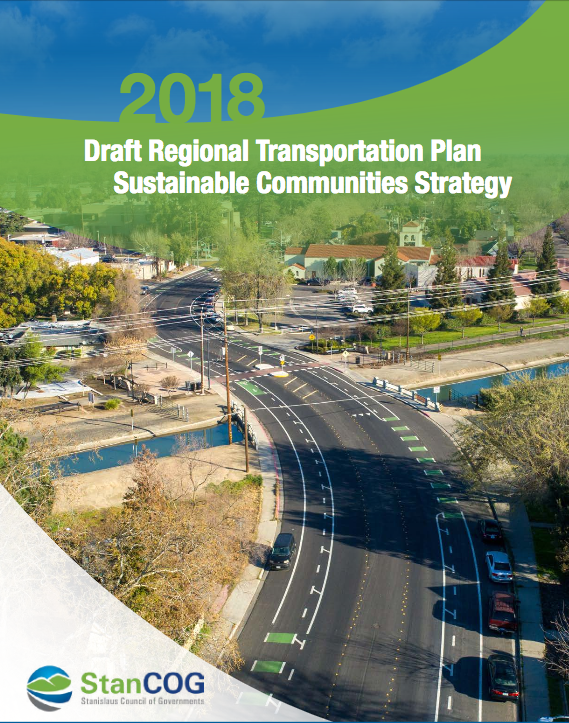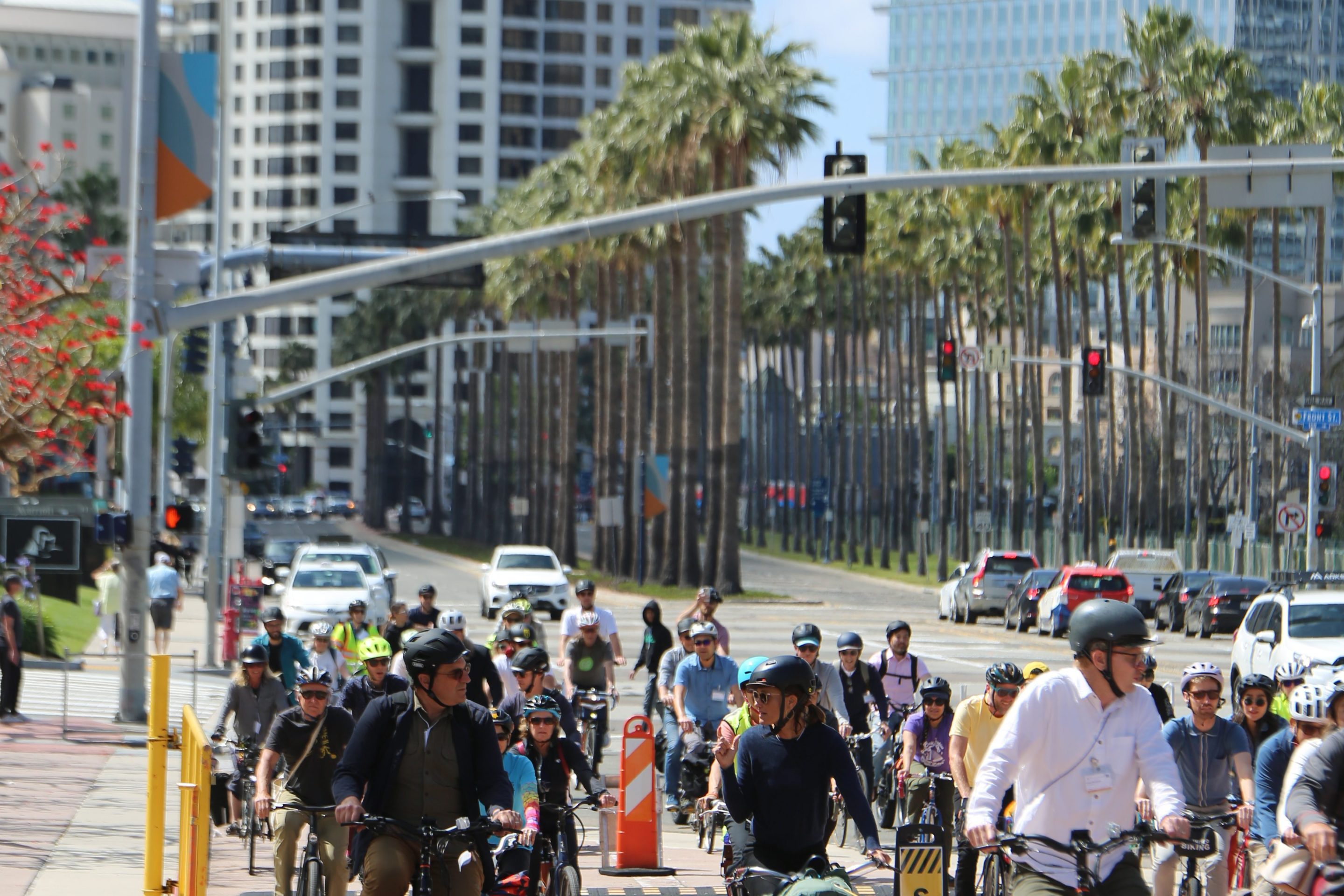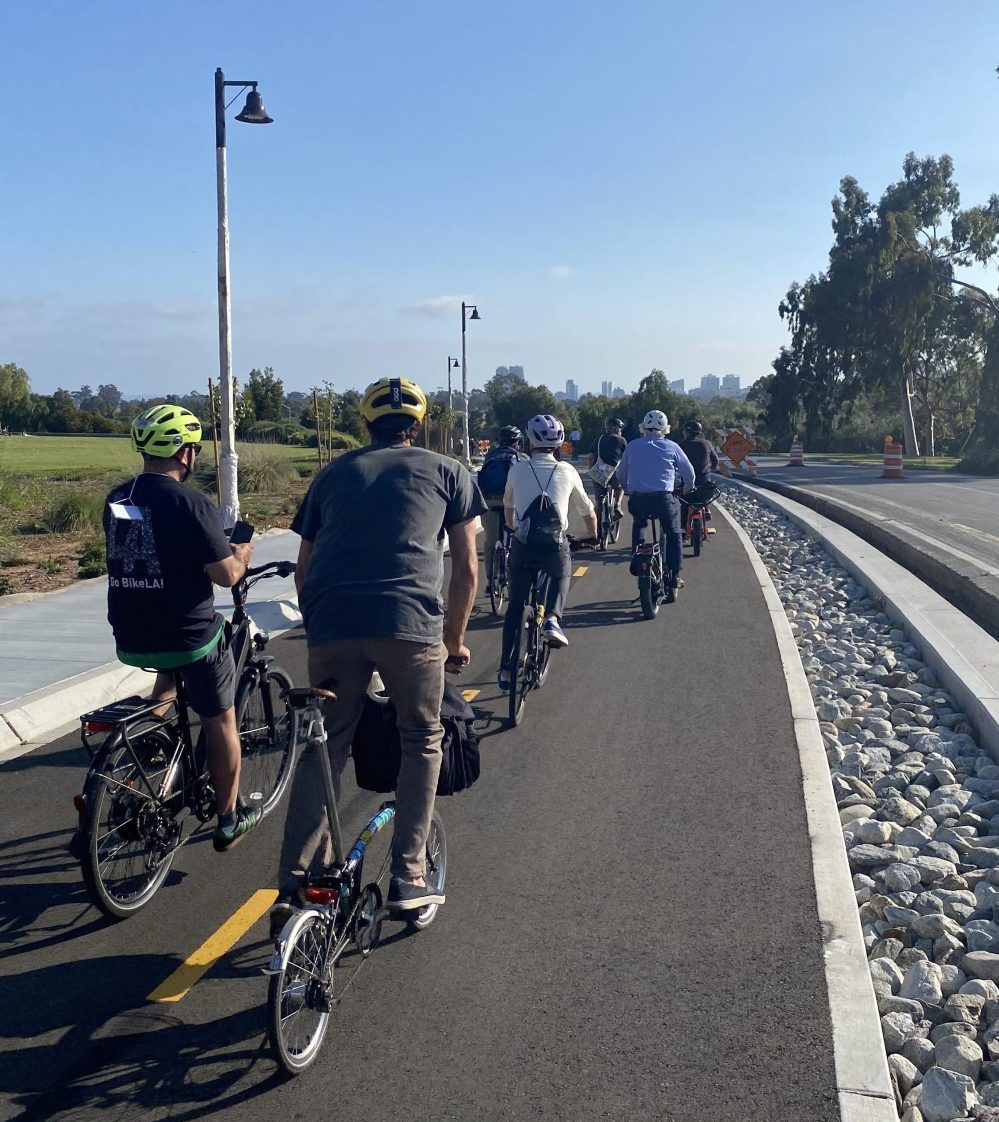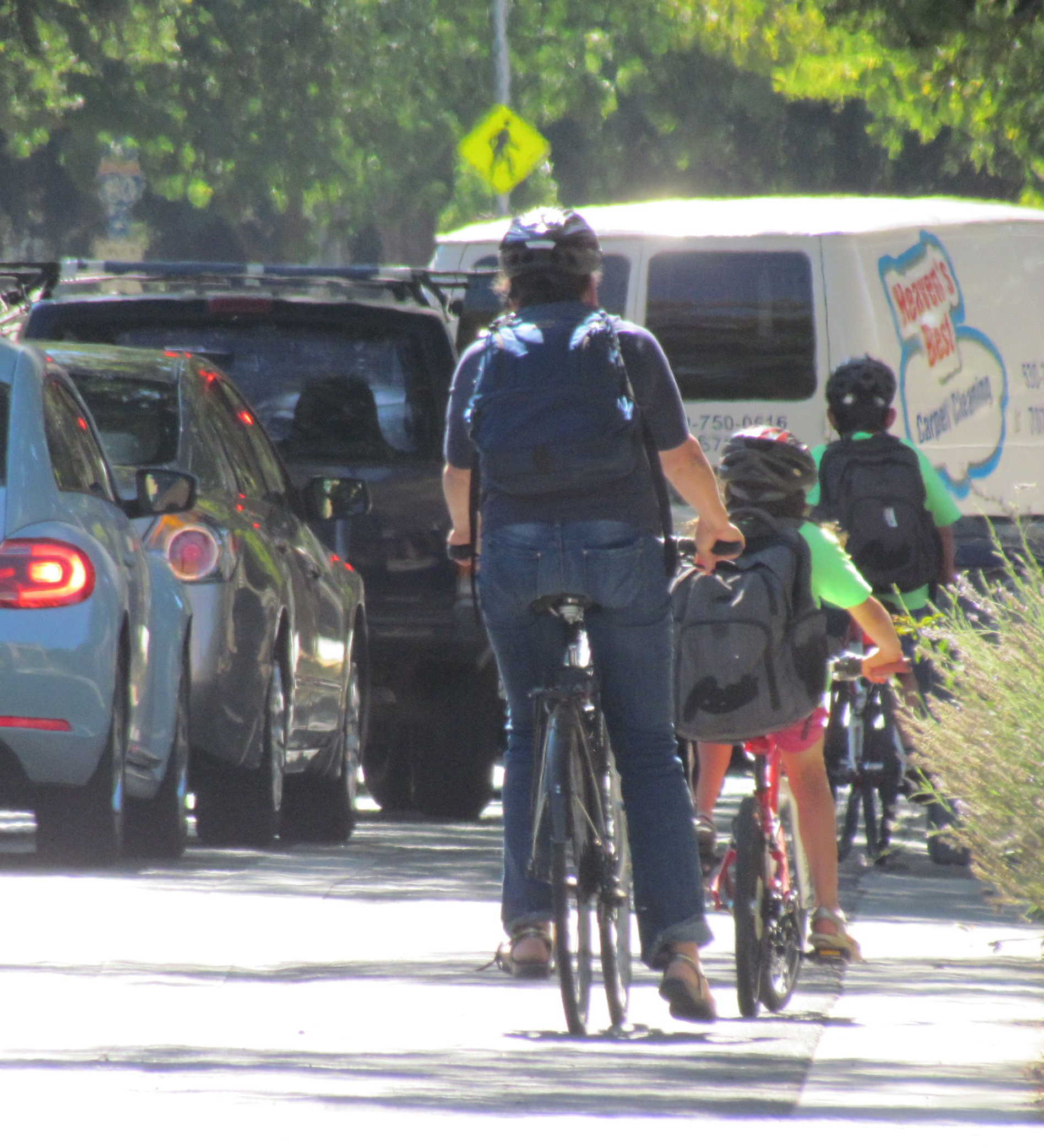Note: GJEL Accident Attorneys regularly sponsors coverage on Streetsblog San Francisco and Streetsblog California. Unless noted in the story, GJEL Accident Attorneys is not consulted for the content or editorial direction of the sponsored content.
In the Central Valley, two regional plans say they will reduce greenhouse gas emissions and vehicle miles traveled, but it's not clear how that will happen.
The Stanislaus Council of Governments (StanCOG) expects to spend $7.4 billion dollars in the next 25 years to improve the county's transportation system. Advocates say the agency needs to be more transparent on how those investment benefit the environment and help reduce driving.
Meanwhile the San Joaquin County Council of Governments (SJCOG) recently approved its 2018 RTP/SCS, which plans to deploy $11.5 billion in investments in that county's transportation system.
StanCOG's draft Regional Transportation Plan/Sustainable Communities Strategy (RTP/SCS) emphasizes infill development, and concentrates projected growth around city centers and transportation corridors. The 2017-2042 draft plan says it will reduce greenhouse gas emissions and vehicle miles traveled (VMT), and even exceed targets for those measures as required by the California Air Resources Board. But it does not make clear how much VMT reduction per capita is expected, nor how the agency arrived at its projections.
ClimatePlan, a network of organizations that advocate for better land use planning and transportation investment, made suggestions to StanCOG on how that could be fixed. For the final RTP/SCS, “we ask that they collect all the VMT [numbers] in one place and have more clarity on how they are getting their greenhouse gas reductions, targets, and projections,” said Christopher Escárcega, regional engagement coordinator for ClimatePlan. Their comment letter is here [PDF].
Approximately 53 percent of the $7.4 billion in investments in the plan – a mix of local, state and federal funds – will be spent on roadways. That leaves 39 for transit, and five percent would be spent on bicycle and pedestrian projects. Escárcega said ClimatePlan commends the nearly $3 billion funding for transit, and notes with approval the continued decrease of funding for roadways over the last three plans – it was 84 percent in the 2011 plan, and went down to 61 percent in the 2014 plan. But, he said, there needs to be more allocated to active transportation. A big reason for that is to solve the first mile/last mile conundrum that can make it harder to use public transportation.
Another concern is a proposed change to the performance indicators used to measure progress. Changing what is measured from one plan to the next makes it hard to compare results and track progress toward goals. In addition, the RTP/SCS Action Plan lacks detail, currently being no more than a table of projects. Escárcega and his fellow advocates say that a clear action plan with steps for implementation would be a good way to further engage community members in the planning process, and it could increase their understanding of the plan.
“My concern is that it is still a little too technical,” said Veronica Tovar, program coordinator for Catholic Charities Environmental Justice Project. She said this applied not just to the plan, but also the outreach conducted by StanCOG. Tovar, along with members of Valley Improvement Projects and the Stanislaus Sustainable Communities Coalition, attended workshops and the public hearing for the RTP/SCS. While the public turnout was good, according to Tovar and other advocates, the workshops and the final document were filled with too much jargon for the average person to understand.
“I heard models and formulas and charts, but I didn’t hear about conversations with people,” said Elizabeth Claes, a bicycling advocate and member of the StanCOG Citizens Advisory Committee, of a workshop she attended in Turlock.
Despite these drawbacks, advocates commended staff for the increase in public participation outreach and for their willingness to work with community groups. Escárcega and Tovar plan to reach out to StanCOG policy board members with their concerns before the final plan is approved.
Meanwhile the nearby San Joaquin County council of governments board recently approved its 2018 RTP/SCS, which plans investments of $11.5 billion in the region's transportation system. Approximately 39 percent of that--$4.4 billion--will go towards roadway improvements and maintenance, with another 28 percent--$3.1 billion—for increased roadway capacity (more vehicle lane miles). Transit projects would receive about 31 percent of the investments--$3.6 billion—and almost three percent--$320 million--will be spent on bicycle and pedestrian improvements.
The SJCOG's plan is expected to meet regional greenhouse gas emission reduction targets--five percent in 2020 and ten percent in 2035--and the agency projects that under its chosen plan, greenhouse gas emissions will be reduced by about 21.6 percent per capita. But under what it has called its "business-as-usual" plan, says SJCOG, those emissions would be reduced by about 20.3 percent.
SJCOG also expects the approved plan to reduce VMT—by about eleven percent from the 2015 baseline, which is about 2.63 miles per capita. But it also claims its "business-as-usual" scenario would reduce VMT by 22.16 percent.
But without better explanations of how they arrived at these numbers, it's had to judge whether they are just hot air.
SJCOG's plan has already been adopted, but StanCOG's is in draft form. Another public hearing will be held to discuss it at 6 p.m., Wednesday, July 18, at the Ceres Community Center, 2701 4th Street, Ceres. Adoption of the final plan is scheduled for the Wednesday, Aug. 15, StanCOG Policy Board meeting.





